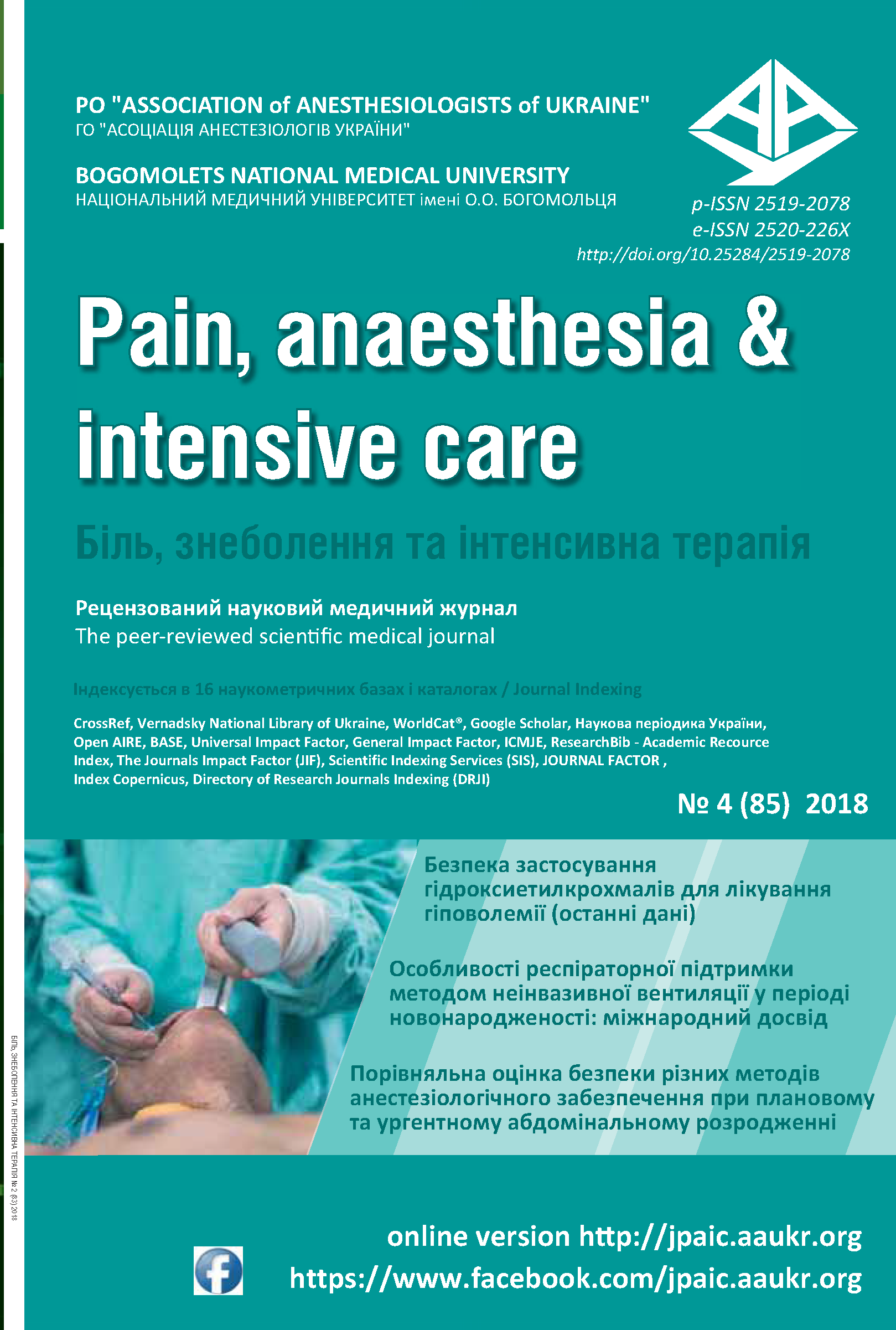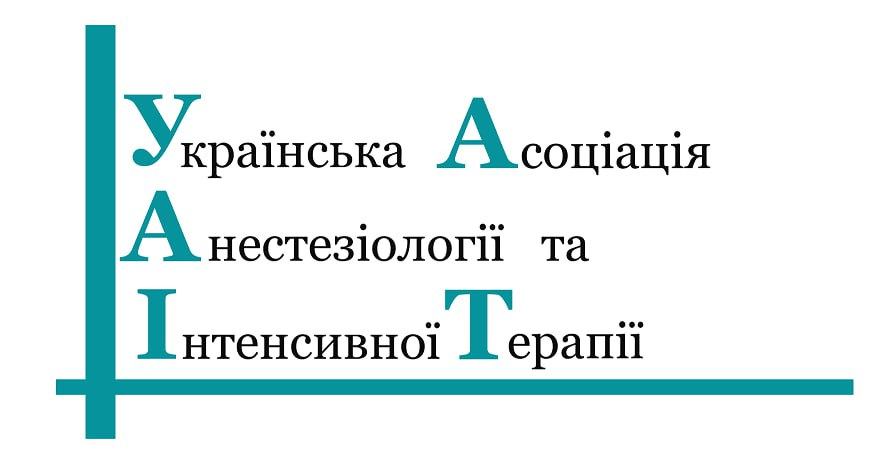Using of tranexamic acid as component of trauma induced coagulopathy treatment
DOI:
https://doi.org/10.25284/2519-2078.4(85).2018.151493Ключові слова:
trauma, fibrinolysis, tranexamic acidАнотація
The aim of the study was to determine the effectiveness of tranexamic acid in patients with multiple skeletal trauma for reducing blood loss and correction of hemostatic disorders.
Materials and methods. The initial state of the hemostasis system was studied in 104 patients with multiple trauma. All patients was in class II (15-30 % of blood loss) according to ATLS protocol, and NISS – 28,34±2,06. Was provided complex evaluation of patients state, including continuous monitoring of temperature and lactates level, the hemostasis system was evaluated using laboratory tests and low-frequency pyezoelectric thromboelastography (LPTEG). Patients in Group I (n = 33) did not receive tranexamic acid, Patients in Group II received tranexamic acid 15 mg / kg every 6 hours for 3 days.
Results. In patients who received tranexamic acid, there was a positive dynamics of hemoglobin, creatinine phosphokinase, lactate, less need for transfusion of blood products and duration of treatment in ICU.
Conclusions. The use of antifibrinolytic drugs positively influences the course of traumatic disease in patients with polytrauma, by correcting coagulopathy and reducing blood loss.
Посилання
Martini W. Z. Coagulation complications following trauma. Mil Med Res. 2016; 22(3): 35.
 |
| 
Maegele M, Lefering R, Yuce l N, Tjardes T, Rixen D, Paffrath T, et al. Early coagulopathy in multiple injury: an analysis from the German Trauma Registry on 8724 patients. Injury. 2007; 38(3): 298–304. doi: 10.1016/j.injury.2006.10.003.
 |
| 
Chapman M. P., Moore E. E., Moore H. B. Overwhelming tPArelease, not PAI-1 degradation, is responsible for hyperfibrinolysis in severely injured trauma patients. J Trauma Acute Care Surg. 2016; 80: 16–23.
 |
| 
Cap A., Hunt B. J. The pathogenesis of traumatic coagulopathy. Anaesthesia. 2015; 70 (1): 96-101, e32-4. doi: 10.1111/anae.12914.
 |
| 
Fries D., Martini W. Z. Role of fibrinogenin trauma-induced coagulopathy. Review. Br J Anaesth. 2010; 105(2): 116-21. doi: 10.1093/bja/aeq161.
 |
| 
Baksaas-Aasen K., Gall L., Eaglestone S., Rourke C., Juffermans N.P., Goslings J. C., Naess P. A., van Dieren S., Ostrowski S.R., Stensballe J., Maegele M., Stanworth S. J., Gaarder C., Brohi K., Johansson P. I. iTACTIC – implementing Treatment Algorithms for the Correction of Trauma- Induced Coagulopathy: study protocol for a multicentre, randomised controlled trial. Trials. 2017; 18(1): 486. doi: 10.1186/s13063-017-2224-9.
 |
| 
Stensballe J., Henriksen H. H., Johansson P. Early haemorrhage control and management of trauma-induced coagulopathy: the importance of goal-directed therapy. Curr Opin Crit Care. 2017; 23(6):503-510. doi: 10.1097/MCC.0000000000000466.
 |
| 
##submission.downloads##
Опубліковано
Як цитувати
Номер
Розділ
Ліцензія
Авторське право (c) 2018 Біль, знеболення та інтенсивна терапія

Ця робота ліцензується відповідно до Creative Commons Attribution-NonCommercial 4.0 International License.
Автори, які публікуються у цьому журналі, погоджуються з наступними умовами:
a. Автори залишають за собою право на авторство своєї роботи та передають журналу право першої публікації цієї роботи на умовах ліцензії Creative Commons Attribution-NonCommercial 4.0 International License, котра дозволяє іншим особам вільно розповсюджувати опубліковану роботу з обов'язковим посиланням на авторів оригінальної роботи та першу публікацію роботи у цьому журналі.
b. Автори мають право укладати самостійні додаткові угоди щодо неексклюзивного розповсюдження роботи у тому вигляді, в якому вона була опублікована цим журналом (наприклад, розміщувати роботу в електронному сховищі установи або публікувати у складі монографії), за умови збереження посилання на першу публікацію роботи у цьому журналі.
c. Політика журналу дозволяє і заохочує розміщення авторами в мережі Інтернет (наприклад, у сховищах установ або на особистих веб-сайтах) рукопису роботи, як до подання цього рукопису до редакції, так і під час його редакційного опрацювання, оскільки це сприяє виникненню продуктивної наукової дискусії та позитивно позначається на оперативності та динаміці цитування опублікованої роботи (див. The Effect of Open Access).








